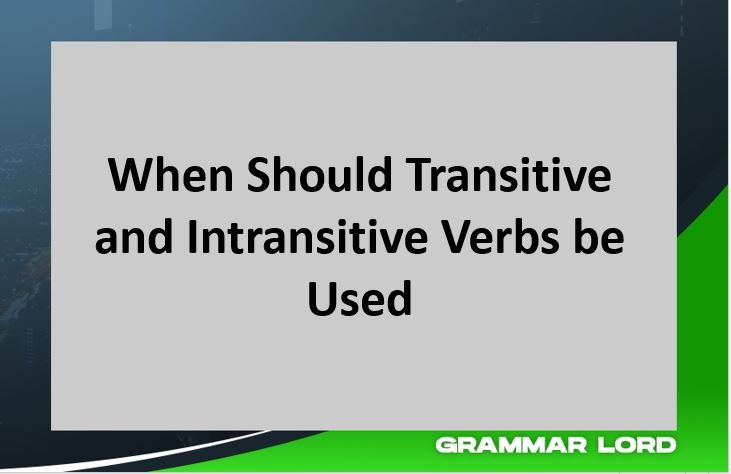You can’t talk about verbs without mentioning the transitive and intransitive verbs. One of them can be compared to some action heroes like Captain Kick-Butt, who need a target to unleash their full power while the other can express their actions without needing a direct object.
I’m aware you want to differentiate between these duos! Happily, this article will explain the mysteries of transitive and intransitive verbs in a way that’s as clear as a sunny day.
READ ALSO: Where Can Regular and Irregular Verbs Be Used
Contents
- 0.1 Here’s the explanation of transitive and intransitive verbs
- 0.2 Here are some examples of these action-packed verbs in action:
- 0.3 Here are some examples of these self-sufficient verbs
- 0.4 But there’s a twist to this
- 0.5 So, how do you tell which verb is which?
- 0.6 Why Does It Even Matter?
- 1 Final Thoughts
Here’s the explanation of transitive and intransitive verbs
Transitive Verbs: See them as action heroes.
They’re the Supermans of the verb world, always transferring their power (the action) to a direct object. This object receives the full brunt of the verb’s impact, like a delicious apple being bitten into (the verb “bite” is transitive, and the apple is the lucky recipient!).
Here are some examples of these action-packed verbs in action:
I painted the fence blue. (Painted is transitive, fence is the direct object)
She wrote a captivating story. (Wrote is transitive, story is the direct object)
The dog chased the frisbee. (Chased is transitive, frisbee is the direct object)
Intransitive Verbs: Now, meet the solo artists of the verb world.
They’re perfectly content to express their actions without needing a direct object. They’re like elegant ballerinas, gracefully pirouetting on their own.
READ ALSO: Unlocking the Power of Personal Pronouns
Here are some examples of these self-sufficient verbs
I slept soundly. (Slept is intransitive, no direct object needed)
The leaves fell from the trees. (Fell is intransitive, no direct object needed)
The children laughed with joy. (Laughed is intransitive, no direct object needed)
But there’s a twist to this
Some verbs, the sneaky chameleons of grammar, can be both transitive and intransitive, depending on the context. They’re like shapeshifters, adapting to whatever sentence they find themselves in.
For example, the verb “break” can be transitive:
I broke the vase. (Broke is transitive, vase is the direct object)
But it can also be intransitive: The vase broke into a million pieces. (Broke is intransitive, no direct object needed)
So, how do you tell which verb is which?
Ask yourself if the sentence makes sense without an object. If it does, it’s probably intransitive. If it feels like something’s missing, like a superhero without a villain, then it’s likely a transitive verb looking for its direct object.
The more you play around with sentences, the easier it’ll be to spot these verb-al differences. Soon, you’ll be able to use them like a master, constructing sentences with ease, whether they have a target or not.
Why Does It Even Matter?
Knowing the difference between transitive and intransitive verbs isn’t just about grammar geekery. It’s about crafting clear and concise sentences that truly pack a punch! Using the right verb in the right way can make your writing more vivid and engaging, like a skilled artist wielding their brush.
READ ALSO: When and How To Use “Cite, Site and Sight”
Final Thoughts
So, the next time you’re writing, remember the adventures of transitive and intransitive verbs. Choose them wisely, and watch your sentences come alive with vibrant action and thoughtful reflection. As usual, the purpose is to communicate with your audience without missing a point.

